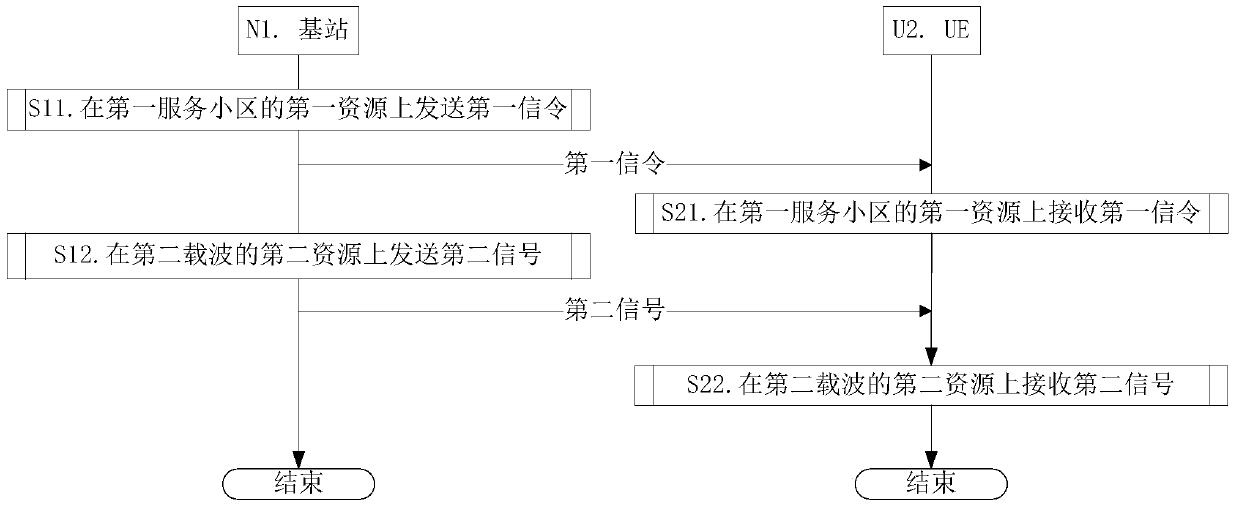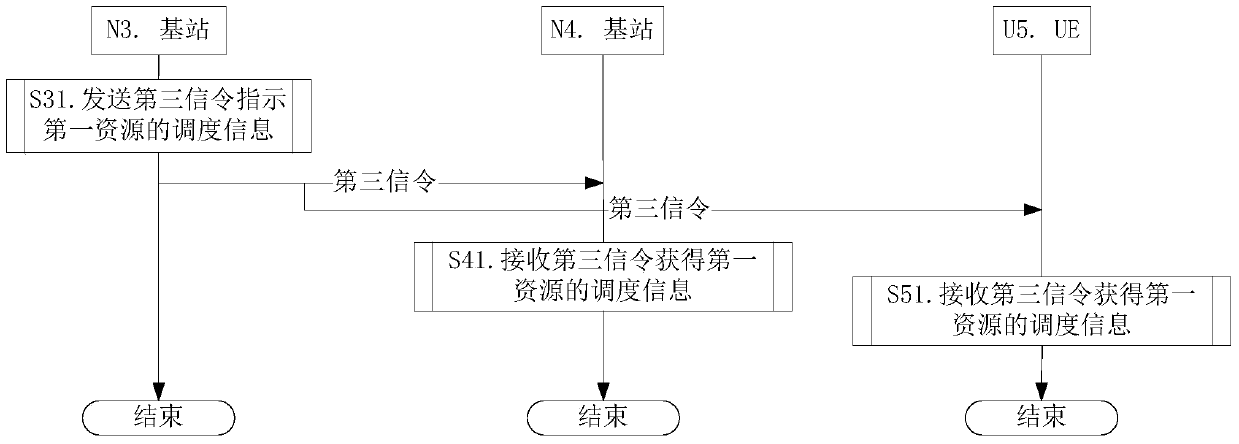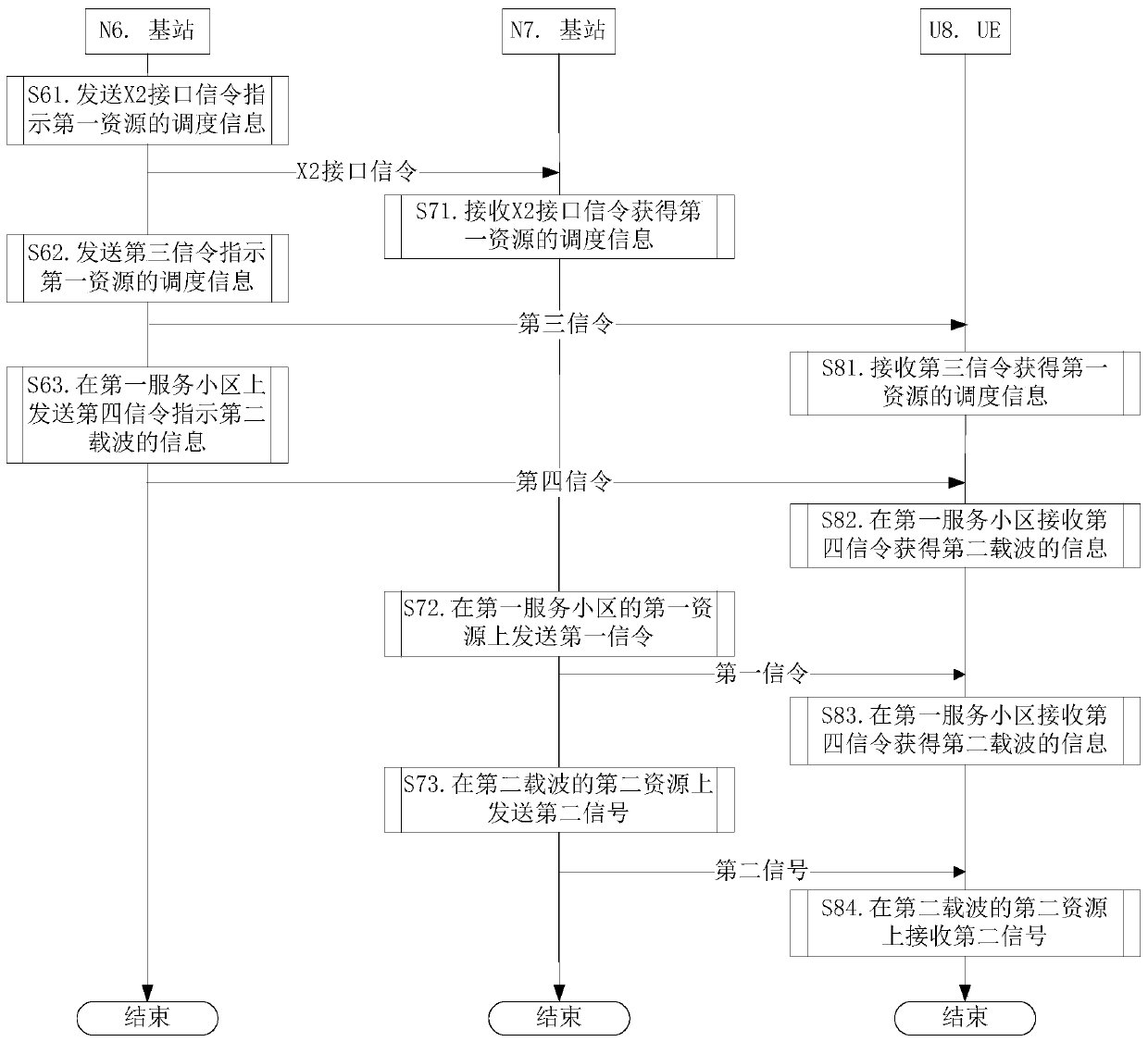A scheduling method and device for unlicensed spectrum
An unlicensed, scheduling information technology, applied in wireless communication, electrical components, network planning, etc., can solve the problems of energy consumption detection performance degradation, inability to schedule SCC in real time, high UE burden, etc.
- Summary
- Abstract
- Description
- Claims
- Application Information
AI Technical Summary
Problems solved by technology
Method used
Image
Examples
Embodiment 1
[0134] Embodiment 1 illustrates a schematic diagram of scheduling unlicensed spectrum on licensed spectrum, as shown in the attached figure 1 shown.
[0135] for base station N1, in step S11, sending the first signaling on the first resource of the first serving cell; in step S12, sending the second signal on the second resource of the second carrier.
[0136] for UE U2 , in step S21, the first signaling is received on the first resource of the first serving cell; in step S22, the second signal is received on the second resource of the second carrier.
[0137] In Embodiment 1, the first serving cell is deployed on a licensed carrier, the second carrier is deployed on an unlicensed carrier, and the transmitting antenna port of the first signaling and the transmitting antenna port of the cell identification information of the first serving cell are not co-located. A signaling includes at least one of the following:
[0138] -Physical ID of the second cell
[0139] - Activ...
Embodiment 2
[0152] Embodiment 2 illustrates a schematic diagram of the base station sending air interface signaling to indicate the first resource, as shown in the attached figure 2 shown. attached figure 2 , the base station N3 sends the cell identification information of the first serving cell, and the first serving cell is the PCC of the UE U5.
[0153] for base station N3 , in step S31, sending third signaling on the first serving cell to indicate scheduling information of the first resource.
[0154] for base station N4 , in step S41, receiving third signaling on the first serving cell to obtain scheduling information of the first resource.
[0155] for UE U4 , in step S51, receiving third signaling on the first serving cell to obtain scheduling information of the first resource.
[0156] In Embodiment 2, the first serving cell is deployed on the authorized carrier, the transmitting antenna port of the third signaling and the transmitting antenna port of the cell identific...
Embodiment 3
[0163] Embodiment 3 illustrates a schematic diagram of communication in an unlicensed spectrum, as shown in the attached image 3 shown. attached image 3 , the base station N6 sends cell identification information of the first serving cell, and the first serving cell is the PCC of the UEU8.
[0164] for Base station N6 , in step S61, send the X2 interface signaling through the X2 interface to indicate the scheduling information of the first resource; in step S62, send the third signaling on the first serving cell to indicate the scheduling information of the first resource; in step S63 , sending fourth signaling on the first serving cell to indicate information of the second carrier.
[0165] for base station N7 , in step S71, receive the X2 interface signaling through the X2 interface to determine the scheduling information of the first resource; in step S72, send the first signaling on the first resource of the first serving cell; in step S73, in the The second signa...
PUM
 Login to View More
Login to View More Abstract
Description
Claims
Application Information
 Login to View More
Login to View More - R&D
- Intellectual Property
- Life Sciences
- Materials
- Tech Scout
- Unparalleled Data Quality
- Higher Quality Content
- 60% Fewer Hallucinations
Browse by: Latest US Patents, China's latest patents, Technical Efficacy Thesaurus, Application Domain, Technology Topic, Popular Technical Reports.
© 2025 PatSnap. All rights reserved.Legal|Privacy policy|Modern Slavery Act Transparency Statement|Sitemap|About US| Contact US: help@patsnap.com



